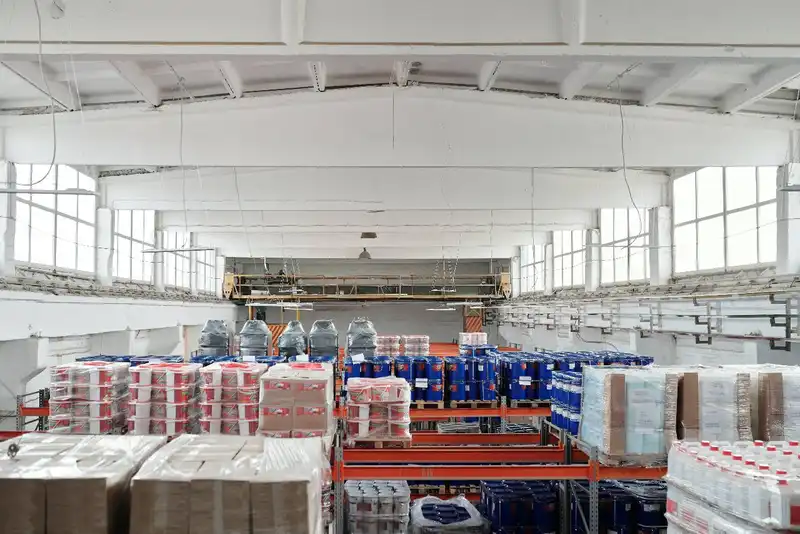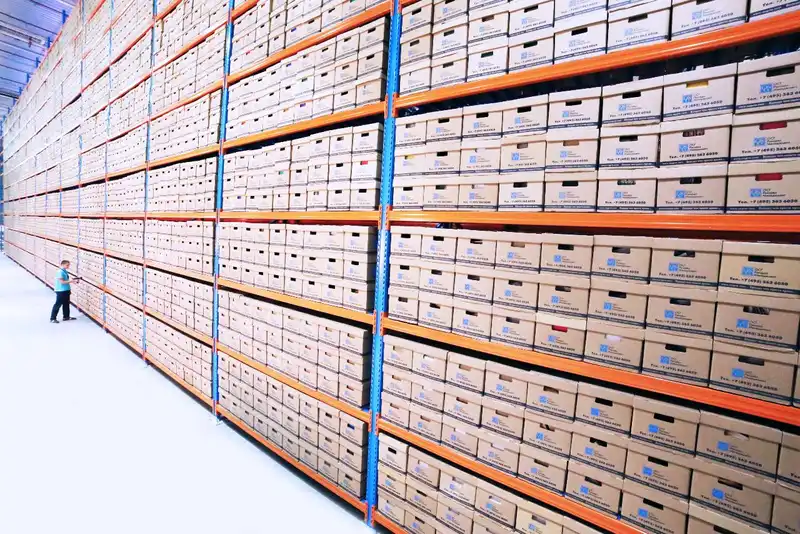Guide to Retail Operations - From Inventory to Customer Management
A lot of work goes into maintaining a retail business, from customer to product management. The journey may begin when customers step foot in a store, but it doesn't end once their order is fulfilled.
Retailers have to juggle procurement, data collection, physical maintenance, and various sales channels simultaneously behind the scenes to ensure shoppers have the best experience.
While retail operations entail numerous manual and digital processes, it is vital for keeping systems running smoothly at all times. Therefore, owners must take the time to understand the requirements for maintaining a healthy workflow.
What are Retail Operations?

Retail operations refer to the various functions and tasks that need to be performed to maintain a store. The term often varies in meaning depending on the employee. For example, retail operations for a cashier may involve conducting transactions, helping customers, and maintaining the cash drawer.
Generally speaking, retail operations include standard processes that take place daily, such as-
- Completing transactions
- Inventory management
- Customer service
- Ordering products
- Order fulfillment
- Cleaning
- Supervising
- Developing marketing campaigns
- Staff scheduling
However, at a closer perspective, it includes the responsibilities of establishing a retail store, including-
- Choosing a store location
- Creating a floor plan
- Choosing product lines
- Implementing pricing strategies
- Product arrangement
- Creating Signage
- Establishing management systems
- Creating policies

Larger companies may have even broader retail operations between their different departments, from finance to human resources. These processes could exist at both the corporate and store levels.
Originally, retail operations only applied to traditional brick-and-mortar stores as that was the primary platform. Now, with e-commerce stores, the term encompasses all functions needed to provide goods and services online as well. This includes processes performed by IT managers and workers at the distribution centers.
Regardless of the platform a store is established on, there are six mandatory operations-
- Design
- Customer service
- Internal fraud and theft control
- Administration
- Store Management
5 Stages of Retail Operations

Given the broad definition of retail operations, businesses need to narrow down which processes are most important to their store. This often depends on the store's sales channels, customers, goods, and services.
The five primary operations that retailers typically handle daily include-
Sourcing
Sourcing is the task of determining which suppliers are best for the store. This means that the vendor must be-
- Reliable
- Cost-effective
- Scalable
By ensuring suppliers meet this criterion, retailers can maintain appropriate stock levels to meet customer demand at all times.
Storing

Since most items experience some shelf time before being sold, retailers need to store the bulk of their inventory in a warehouse.
Retail storage must maintain the products' quality at all times to reduce the risk of theft and damage. This means the stock should be stored in secure locations that can be locked.
Perishable and sensitive items may require more strict accommodations, such as temperature-controlled rooms, to minimize the threat of spoilage. Other products may also be sensitive to light and moisture.
Storage should optimize inventory organization for easy retrieval to reduce the travel time for product pickers. The more accessible the items are, the more efficient the fulfillment and delivery processes will be.
Managing
Adequate inventory management regulates the flow of products in and out of the store, to maintain healthy stock levels at all times. This ensures that stores can meet fluctuating customer and market demand to increase sales and profits.
It also prevents overstocking products, which can lead to increased spoilage and inventory expenses.
By prioritizing inventory management, retailers can improve visibility into their supply chain and optimize their operational efficiency.
Staffing

A business's workflow depends solely on its employees. Therefore, if there are too few or too many workers, companies may experience lagging systems or even duplicated tasks, significantly reducing operational efficiency.
Proper staffing ensures that there are just enough employees to perform retail operations without overcrowding work areas. It also verifies that workers are experienced and qualified to complete tasks correctly.
Otherwise, companies may find themselves spending more money on training sessions and reconciling discrepancies from poor employee performance than actual retail operations.
Serving
Customer service is among the top priorities of every retail business, as income depends on how well they can help their shoppers. However, customer service can look significantly different between stores, depending on their-
- Type of retail
- Customer base
- Operational capacity
- Retail approach
Retailers must know precisely what their consumers want and expect from a business to fulfill their needs adequately.
Product Inventory Responsibilities

There is a lot that goes into inventory management in order to balance supply and demand. Efficient product replenishment means retailers can maintain stock levels for each product line to minimize unnecessary storage expenses and promote sales.
Therefore, items with fast turnover rates will require more purchase orders than slow-moving inventory.
Inventory management has several functions, including-
Ordering Merchandise
Sourcing products requires extensive knowledge of products' average sales, turnover rate, customer demand, and market prices. Inventory managers need time management skills to optimize logistics planning to avoid overstocking and understocking warehouses.
Managers ordering merchandise also need to consider procuring product variances, such as different colors, sizes, features, and price points, to give customers more options.
With an automated inventory ordering solution, companies can connect their management systems to forecast replenishment needs. By integrating all software, inventory data collected by the point-of-sale (POS) and warehouse systems can trigger an automatic merchandise order whenever levels hit their reorder points. This prevents stockouts, which can lead to lost sales and backorders.
Receiving Stock

After placing a purchase order, businesses need a system to receive shipments efficiently.
Employees should be able to correctly and quickly cross-examine purchase orders, shipping slips, invoices, and physical inventory to ensure all products are present and undamaged. These documents should be filed properly in an inventory management system for future reference.
Only then should workers unbox and stock the products in the warehouse.
Using an Inventory System
The three primary inventory systems are-
- Perpetual Inventory uses inventory and POS software to update stock records with every purchase and procurement to provide businesses with real-time data.
- Physical Inventory requires employees to manually count products at the end of each accounting cycle.
- Combined Inventory uses physical inventory to double-check the quantities provided by the perpetual inventory system to ensure data is accurate.
Pricing

Stores typically establish product prices based on competitors' models, customer demand, and market trends to ensure shoppers are willing to meet the asking price. Pricing also includes calculating discounts for slow-moving products and seasonal promotions to boost sales.
Product Handling
Merchandise handling involves everything from stocking shelves to shipping items to consumers.
Retail Administration Responsibilities
Administration encompasses many operations outside of clerical work, including-
Managing the Facilities

Stores should remain in working condition at all times. This includes keeping the facilities clean and workstations organized. With poor maintenance, customers may take their business to retailers that invest the care to maintain hygienic facilities.
Retailers should regularly clean their-
- Parking lot
- Restrooms
- Floors
- Counters
- Shopping carts
Training Employees
Given the quick turnover rates of the average retail job, businesses must ensure employees are appropriately trained. Workers should understand basic customer service procedures, from handling stock to completing transactions.
Managing Promotions
Many stores rely on seasonal promotions and markdowns to drive sales and profits. Without occasional discounts, retailers are forced to hold on to or dispose of the outdated stock.
Data Management

By using the latest technology, businesses can streamline data exchange through automation tools, such as barcode scanning. With POS software, retailers can even collect customer information from every transaction. This enables marketing teams to create targeted promotions, boosting engagement, and sales.
Collecting relevant data also enables analysts to pinpoint bottlenecks within operations to improve workflow and resolve discrepancies.
Customer Service Functions
Although customers are not always right, they must be treated respectfully if retailers want to increase potential sales. Stores that have excellent customer service not only increase their competitiveness but have the option of increasing their pricing also, as shoppers are willing to spend more for a better experience.
While many people picture customer service as employees helping shoppers in traditional brick-and-mortar stores, online retailers also must prioritize the customer experience. Many companies use automatic chatbots to answer customers' questions and help browsers locate items.
Aside from assisting consumers, customer service also entails establishing comprehensive policies. For example, many shoppers are only willing to make a purchase if they know they have the option of returning, exchanging, and getting a refund for the product if needed.

The most successful retail stores thoroughly train employees to treat customers respectfully, provide assistance, and perform transactions.
To gain a better understanding of the different customer service elements, management should ask themselves-
- How are the customers greeted?
- Do employees recognize returning customers?
- Does the store provide personalized services?
- What must employees do if the store does not provide a customer's request?
- Do employees offer guidance to shoppers?
- Does the store have a loyalty program?
- How does the store address question, concerns, and complaints?
Retail Operations Best Practices
Whether working in the store or supply chain, there are various ways retailers can improve their operations-
Optimize the Warehouse Layout

To streamline workflow, businesses should organize their warehouse by placing popular items closest to the order fulfillment centers and slow-moving products in storage.
This reduces travel time for product pickers, decreasing lead times. Managers should also consider storing items that are commonly bought together close to one another.
Perform Cycle Counts
By regularly performing cycle counts, retailers can mitigate risks and determine the cause of discrepancies. This significantly improves inventory data accuracy, so businesses can better understand their needs.
Companies that use inventory management software can streamline cycle counts with automation tools, eliminating the need for manual data entries.
Enhance Ordering Strategies
Continuously improving order strategies means retailers can avoid under and overstocking products to maintain profitability during slow and busy seasons. With inventory ordering software, businesses can analyze stock data to determine where, when, and how to source goods to preserve the bottom line.
Utilize Cross-Merchandising

By properly managing inventory data, stores can determine their best and worst selling products. This determines cross-merchandising opportunities that can increase sales and revenue.
For example, relevant accessories and chargers should be stored next to electronic devices to increase the average order value (AOV).
Report In-Store Sales
The first step to driving in-store sales is increasing foot traffic. With POS data, retailers can determine which promotions are attracting the most shoppers and spreading brand awareness. This information allows marketers to expand impactful campaigns to continue increasing the number of new visitors.
Optimize Retail Store Layout
Aside from keeping the store clean, retailers should pay close attention to the customer's shopping journey. By understanding how the average shopper browses products, stores can implement distractions to prevent customers from passing up products.
They can also redesign the layout to draw attention to high-profit items and ensure customers need to walk past new product lines in order to get to popular goods.
Improve Inventory Accuracy

Omnichannel retailers must ensure that they are collecting sales data from each of their channels to prevent stockouts. By integrating management systems, businesses can automatically consolidate inventory data to ensure they meet customer demand and monitor reviews.
Review Profit Margins
It is crucial to differentiate where each portion of the bottom line is generated. By breaking down profit margins, stores can invest more into channels that successfully increase sales.
Automate Omnichannel Workflow
Automating workflows ensures businesses are focusing their time and efforts on critical tasks rather than mundane clerical work. This enables managers to improve their employee management, reducing labor costs and increasing profits.






